Questions on Political Economy
This question-and-answer format of a primer on Marxism-Leninism is the prepared text by Jose Ma. Sison for the third in a four-part series of webinars on his book, Basic Principles of Marxism-Leninism. The webinar was conducted by the Anakbayan-Europe and the National Democratic Online School on 23 August 2020. The source of the text is from the Facebook public group, “ILPS Solidarity”, with minor typo corrections by PRISM editors. The video version can be watched on: https://www.youtube.com/watch?v=aUbxkPbjH4k.
Questions on Political Economy
From the Host Anghelo Godino, Anakbayan-Europa, ND-Line Online School
Answers of Jose Maria Sison, Author of Basic Principles of Marxism-Leninism
August 23, 2020
1. What is ‘political economy’?
JMS: Political Economy may be defined as the study of the fundamental laws of motion of the whole economy of a society. There are mountains of economic data about economic activities but such can be subjected to research, analysis and generalization for the purpose of theorizing and policy-making.
The classical British economists were the first to establish the subject of political economy as a field of study in the latter half of the 18th century and the early 19th century. With his book Wealth of Nations (1776), Adam Smith was the earliest classical economist to make the most comprehensive and coherent presentation of capitalism at the stage of free competition. He pointed to labor as the source of value in the commodity but was mainly concerned with the important role of the market, especially with the so-called invisible hand of self-interest resulting supposedly in the common public good.
David Ricardo elaborated on the labor theory of value and explained the differing interests of the workers, entrepreneur and landlord and he was most concerned about the unproductive landlord whose claim to rent is based on sheer traditional private ownership of land. He recognized the injustice done by the landlord to the capitalist but not the injustice done by both capitalist and landlord to the worker.
Marxist political economy is the most comprehensive and profound study of the laws of motion of capitalism. Karl Marx laid the foundation of Marxist political economy in Das Kapital (Vol. I published in 1867), encompassing the genesis, development and decline of capitalism and pointed to the possibility of socialism. To grasp and analyze the internal laws of motion of capitalism, he concentrated on the production system rather than on the distributive system and proceeded from the analysis of the commodity as the cell, the basic organic unit, of the capitalist mode of production rather than that of the market phenomena which bourgeois political economy overstress.
Marx exposed the fundamental laws of motion that impelled free competition to develop toward the concentration of capital and create the very forces that are bound to bring about socialism.
After Marx, V.I. Lenin focused on monopoly capitalism in his Imperialism, the Highest Stage of Capitalism. Stalin and Mao would make further contributions to Marxist political economy in connection with socialist revolution and construction. Marxist political economy encompasses Marx’s theoretical writings to the building of socialism.
2. Political economy tackles Marx’s critique of capitalism. He starts with the analysis of commodity. Please discuss commodity. What is its unique characteristics within capitalism?
JMS: Like Adam Smith and David Ricardo, Marx affirmed that the value of the commodity is the amount of labor time expended on its production. Labor time remains to this day a measure of labor power used in production. To focus on the commodity as the starting point of analysis is to affirm the primacy of production over distribution in the study of a certain mode of production. Commodity mass production is what differentiates capitalism from all previous economic systems, which had been basically natural economies highly dependent on nature or land.
A commodity is a thing produced by labor power and has use value and exchange value. Use value means that the thing can satisfy a human want. Exchange value means the thing can be exchanged in the market for another thing that normally involves the same amount of labor power. If one unit of a certain commodity takes one day of work to make, it will exchange for two units of another commodity each of which takes a half day to make.
In the commodity mass production in the capitalist system, no worker can lay claim to having produced an entire product. To measure the amount of labor power that goes into the making of a commodity, we have to go into averaging the various standards of labor time or rates of productivity that go into the making of the commodity in a given society. The outcome of the computation is the socially necessary average labor time that goes into that commodity.
3. Labor power is also a commodity under capitalism. How? And how does capitalism benefit from it?
JMS: You are correct in saying that labor power itself is a commodity in the capitalist system. Its value is the amount of socially necessary average labor time to produce the basic necessaries (wage goods) to maintain and reproduce the worker and his family. In the labor market, the capitalist buyer of labor power offers the price of labor power, which is called the wage—the value of labor power in money terms.
The capitalist class gives the working class a subsistence wage. This should cover at the least the barest physical needs of the workers to keep them coming back to work and also to maintain a class as the source of labor. The workers themselves demand a minimum wage level in order to subsist. When business is good, wage increases may even be made so as to raise the level of productive skills among the workers.
It is to the interest of the capitalist class to allow the subsistence, maintenance and reproduction of the working class. Labor power is the sole commodity that is capable of reproducing itself and all other commodities. Capital by itself cannot produce anything. Historically, it is but an accumulation of labor power. It is congealed labor power. In the production of new commodities, no new value is created by the machines and raw materials. Their old values are merely transferred into the new commodities. New added values can only come from the labor power of the workers attending to the machines and raw materials.
The capitalist class extracts its profits from the process of production itself and from the total value of commodities produced by the workers. The difference between the total value that the workers create and the wages that they receive is what is called surplus value or unpaid labor. This is the source of industrial and commercial profit, interest payments and land rent.
4. The theory of surplus value radically differentiates Marxist political economy from bourgeois political economy. Could you please elaborate on the theory of surplus value?
JMS: Indeed, the theory of surplus value radically differentiates Marxist political economy from bourgeois political economy. It shows that profits are extracted from the process of production, particularly from surplus value. It likewise shows that exploitation of the working class is rooted in the process of production and not in the market.
The leading classical economists Smith and Ricardo had affirmed the labor theory of value but they did not develop it to the extent that Marx did. The general run of bourgeois economists descending from the classical economists have obscured the labor theory of value or completely negated it by asserting the primacy of the market mechanism over the productive process and by claiming that the profits are made in the market in the difference of buying and selling price and vice versa. But no new material values are created in the market. Total values in production are equal to total prices in the market.
For the capitalists to extract a larger amount of surplus value, they lengthen the working day and depress the wages. This is called absolute surplus value. During the period of the primitive accumulation of capital which went on for centuries and extended into the first half of the 19th century, the work day ranged from 12 hours to 18 hours at extremely low wages.
The capitalists can also shorten the work day and raise wages. But they resort to such methods of raising productivity as the speed-up, especially as a result of the introduction of the conveyor belt; extremely high production quota subject to wage cuts due to nonfulfilment; systems of rewards and punishment that motivate the worker to put more work in less time; and the like. In this case, relative surplus value is what is extracted.
As a result of the increasing use of machines and worker resistance to the long work day, this was reduced to 12 hours in the greater part of the 19th century until it was further reduced to 10 hours in the late part of the 19th century. The eight-hour work day is largely a 20th century achievement of the international proletariat. In any case, the larger is the surplus value, the higher is the rate of labor exploitation. The rate of surplus value, also called the rate of exploitation, is arrived at by dividing the amount of surplus value by the amount of wages paid.
Though the capitalist class needs the workers as the source of new values in production, from which profits can be obtained, there is always a considerable portion of the working class that is unemployed either due to a lag in the absorption of displaced peasants by industry in a developing economy or due to the disequilibrium in the fully developed economy. These unemployed are called the reserve army of labor. The more they are, the more they tend to press down the level of wages and increase the surplus value obtainable from those employed.
5. Marx laid bare the laws of motion of capitalism. Why, according to him, is capitalism doomed to fail? Have we seen such failures in the capitalist countries?
JMS: At the outset, I must make clear that Marx, in laying bare the laws of motion of capitalism, explained the accumulation of capital and competition of the capitalists lead to concentration of constant capital at the expense of variable capital for wages and thereafter to the crisis of overproduction during which the workers are thrown out of their jobs, are aggrieved and are likely to rise up but at the same time the winning capitalists can rise to a new level of capital concentration by absorbing and laying aside the losing capitalists.
Marx never said that the crisis of overproduction would necessarily lead to collapse of capitalism in the era of free competition capitalism even as he declared in the Communist Manifesto that such a crisis opened the possibility for workers to rise up and seize political power from the bourgeoisie. He did not even anticipate that the Paris Commune of 1871 would occur. But when it occurred, he supported and welcomed it as the prototype of the proletarian revolution and proletarian class dictatorship.
Let me present the explanation of Marx for capital accumulation and the crisis of overproduction. The capitalists compete with each other to raise their productivity and achieve economies of scale in order to extract more surplus value from the total value created by workers and thereby accumulate capital. They are driven to produce more goods in less time and at less cost. Those who fail to adopt more efficient methods of production are priced out of the market. The capitalists are therefore driven to increase their constant capital for the means of production and decrease the variable capital for wages.
At an early stage, the competition among the capitalists is essentially one of raising capital. The winners can raise more capital than the losers. This capital is divisible into two parts: 1) constant capital which consists of the means of production (capital equipment, raw materials, plant site and the like;) and 2) variable capital which is the fund for wages. But as the competition rages and goes from one round to another, there is the ever increasing trend to raise the organic composition of capital, that is to say, constant capital.
After all, the winners in the competition swallow up the losers through mergers and other forms of absorption. There is always a need for the competing capitalists to build up constant capital in order to consolidate their position and to raise productivity further. Constant capital is raised at the expense of variable capital.
The labor-saving machines displace the workers. In the heat of competition, the capitalists also think that they can improve their competitive position and raise their profits by reducing the variable capital. At first,this means that they depress the wages. Eventually, they reduce their work force by acquiring labor-saving machines, in effect, increasing constant capital.
The competing entrepreneurs or firms act anarchically in pursuit of their respective profit-seeking interests. They are out to trounce each other. Each fails to understand that by reducing variable capital and laying off workers each is actually reducing the source of new values and in effect profits.
The result is the tendency of the rate of profit to fall. The profit rate is determined by dividing the surplus value by total capital (constant capital plus variable capital). If constant capital is increased but variable capital is diminished, the amount of surplus value is reduced and the profit rate is likewise reduced.
The high productivity of capital goods and that of capitalist competition reinforce each other to produce goods at low prices in comparison to those produced in backward modes of production. Commodities are sold at production prices, equivalent to cost of production plus a small and dwindling average profit. The average profit is small and dwindling due to the diminution of variable capital in the process of production.
In the race to raise the organic composition of capital, the competing capitalists build up department I (capital goods). But then, greater production under this department leads to still greater production under department II (consumer goods). This comes into contradiction with the diminution of variable capital or wage fund.
The increasing supply of the articles of consumption does not jibe with increasing unemployment and diminishing purchasing power of the workers. The market, consisting mainly of workers, is narrowed by layoffs and depressed wages resulting from the competitive drive to concentrate capital. Thus arises the crisis of overproduction, relative to the market.
In the crisis of overproduction, both overinvestment and underconsumption are operative. It is obvious that existing capital goods are capable of producing more than what the market can carry. At the same time, the workers do not have the income to purchase and consume all that is in the market. Neither can the puny number of capitalists consume what has been produced even if they are the ones who have high incomes.
The occurrence of the crisis of overproduction exposes the fatal weakness of capitalism. The economy operates far under capacity. Tremendous amounts of human and material resources go to waste. Commodities are even destroyed in order to adjust the supply to the constricted market. The reserve army of labor becomes so large that it no longer simply presses down the wages but cuts down effective demand. Both employed and unemployed are restless and tend to unite against the capitalist class. The crisis of overproduction becomes an occasion for the big capitalist firms to swallow en masse the smaller firms that go bankrupt.
The drive towards even greater concentration of capital continues unabated. The economy becomes revived after so much waste and after the winning capitalists have grown so much bigger than before and start to rehire the unemployed. A period of boom follows only to end up in another bust which is worse than the previous one. This again leads to a higher concentration of capital in firms fewer than before.
The crisis of overproduction necessitates the use of the state in shoring up the capitalist system and appeasing or subduing the proletariat. At worst for the system, the crisis exacerbates the class struggle and is liable to lead to a revolutionary civil war and the victory of the proletariat. There is also the likelihood that the crisis leads to an international war. However, Marx was not yet able to elaborate on this possibility.
6. Capitalism has already reached its highest stage -modern imperialism. Could you please discuss how briefly how imperialism was reached? Which countries became imperialists and how?
JMS: As Marx scientifically predicted in Das Kapital, free competition in his time would lead to the high concentration of capital in the hands of a few capitalist firms during the last three decades of the 19th century. Capitalists of Europe, the United States and Japan made an outcry for the expansion of the market in view of their limited home markets.
The British capitalist magnate Cecil Rhodes, the American politician Theodore Roosevelt and men of letters like Rudyard Kipling and even Victor Hugo were among the most raucous in calling for imperialist expansion and placing every part of the world in the capitalist network. They frankly admitted the capitalist motives even as they couched these in the rhetoric of civilizing the world. They echoed the cliches of old-type mercantilist colonialism and applauded the bloody adventures of modem imperialism.
Great Britain, the leading capitalist country, did not only have its old colonies (India, what are now Pakistan and Bangladesh, Ceylon or Sri Lanka, what is now Malaysia, Australia, Egypt, parts of Latin America, etc.) but also acquired the largest share in the late 19th century rush to colonize Africa. It consolidated the largest spheres of influence in China. Next only to Great Britain as the largest imperialist power was France. It had its old colonies, which included Indochina, and acquired the largest share in Africa next to Great Britain. Small capitalist countries like the Netherlands and Belgium also had substantial colonial holdings. The former had Indonesia as the largest possession and the latter, the Belgian Congo.
Strong latecomers to capitalist development like the United States, Germany and Japan participated in the rush to acquire colonies. Notwithstanding its large frontier in the west, its acquisitions from colonial powers (Spain and France) in North America and its hegemony over the main part of South America, the United States provoked Spain into a war in order to seize Puerto Rico, Cuba and the Philippines and sidled up to Great Britain in order to have a share of the imperialist action in China.
Germany got some portions of Africa, spheres of influence in China, some Pacific islands, coveted large portions of Eastern Europe and got into complex entanglements with Russia and Austria. The Alsace-Lorraine areas taken from France by Germany as a result of the war of 1871 continued to be a bone of contention between the two countries. Japan held Formosa (Taiwan) and Korea as colonial possessions and a sphere of influence in North China. Russia, the weakest of the capitalist countries, held on to large territories seized from China and was at odds with Japan in this area. It also coveted large portions of Eastern Europe and was at odds with the old Austro-Hungarian and Ottoman empires.
At the beginning of the 20th century, there was no longer a part of the world that was not in the international network of capitalism. The capitalist countries had drawn in the rest of the world as they competed for markets of surplus commodities, sources of raw materials, fields of investment, spheres of influence and positions of strength. The monopoly capitalists were out to relieve capitalist society of its capital glut, relative overproduction and class contradictions by being able to exploit the people in colonies and semi-colonies.
7. Lenin studied and wrote extensively about Imperialism. What were the basic features of imperialism according to him?
JMS: In his Imperialism, the Highest Stage of Capitalism, V.I. Lenin stated the five basic features of imperialism or monopoly capitalism. They are as follows:
a. The concentration of capital has reached the point that monopolies have become dominant in capitalist society.
b. Industrial capital has merged with bank capital to become finance capital and create a finance oligarchy.
c. The export of surplus capital, aside from that of surplus commodities, has gained importance of its own and is the outlet for the capital glut in capitalist countries.
d. International combines of monopolies, trusts, cartels, syndicates and the like have emerged.
e. The division of the world among the capitalist powers has been completed and its redivision cannot but lead to war.
8. What is the effect in the economy of having monopolies?
JMS: Monopoly means that one company or a single combination of companies controlled by a single group of capitalists dominates the main part or entirety of an industry. At the start of the 20th century, such strategic and major industries as steel, oil, coal, machine-building, chemicals, railroads, etc., were already in the hands of monopoly capitalists.
As early as 1890, public clamor in the United States rose against such monopoly capitalists as the Rockefellers in oil, Du Ponts in chemicals, Mellons in steel, Vanderbilts in railroad, and others came to such a high pitch that the Sherman anti-trust law was enacted. But at most the monopoly capitalists could only be summoned to administrative hearings where they were advised to merely rearrange their investments. Eventually, the law was directed more against trade unions as supposed monopolies in restraint of trade.
The era of free competition basically came to an end towards the end of the 19th century. All major fields of economic activity was dominated by the large monopoly firms and these continued to grow larger. In the era of imperialism, the monopoly firms have become even larger by extracting superprofits from the colonies and semi-colonies and by continuing to engage in mergers as a result of recurrent economic crisis.
One learns much about monopoly by perusing the assets, sale and profits of such companies as the Standard Oil chain of companies, General Motors, Ford Motors, General Electric, US Steel, Bethlehem Steel and the like. One learns that all the talk about free enterprise by bourgeois economists is all a lie.
In the late 1950s the 135 largest manufacturing corporations in the United States accounted for half the manufacturing output in the United States and that the 250 largest firms turned out a flow of goods equal in value to the output of the entire economy prior to World War II. Nowadays, under the neoliberal policy of imperialist globalization and the application of higher technology in production distribution, the concentration of monopoly capital is far, far higher than ever before.
9. What does it mean to have industrial and bank capital merged together?
JMS: The merger of industrial and bank capital has put more capital at the disposal of the monopoly capitalists than ever before and has spawned a finance oligarchy that amasses profits not because of its entrepreneurial skills but because it simply controls and manipulates finance capital. The monopoly capitalist class hires the managers to run its productive enterprises and, as a rentier class, simply sits back to await the dividends from shareholdings.
Monopoly capitalists who own banks (Rockefellers in Chase Manhattan and National City Bank of New York; Fords in Manufacturers Hanover Bank; Mellons in Mellon Bank; Du Ponts in Chemical Bank; etc.) actually lend the money of other people (including deposits of workers) to their own industrial firms at prime rates for their expansion. And they borrow from their own banks in order to buy stocks. In times prior to imperialism, the banks were autonomous from manufacturers and they at first specialized in extending commercial credit or handling bills of exchange. Subsequently, they extended loans for industrial projects but still retained their autonomy. Finally, in the imperialist era, the monopoly capitalists put the banks and industries under their ownership and control.
The role of monopoly capitalists as rentiers is underscored by the use of holding companies, trust funds and tax-exempt government bonds. They are further removed from the process of production and their parasitic character is starkly obvious. It is their hired financial managers who manage their mounting funds. The monopoly capitalists have no claim to income except by the backward principles of private property and heredity.
According to the Lampman 1922-1956 study (The Share of Top Wealth Holders in National Wealth, 1922-1956) 1.6 percent of the adult population in the United States owned 32 percent of all privately owned wealth. Among the several items in the list of their wealth are 82.2 percent of all stocks and 100 percent of state and local (tax-exempt) bonds. The disparity in the wealth of the monopoly capitalists is now far worse than ever before.
10. What are the roles of monopolies, multinational giants, banks, and trusts in exploiting workers, migrants, and even the environment?
JMS: The monopolies, multinational giants, banks and trusts combine in exploiting the workers in their own countries and in whichever countries they are migrant workers. They have aggravated the conditions of underdevelopment, unemployment and mass poverty in the overwhelming majority of countries, lowering the wages of workers and forcing the workers to seek low-paid menial jobs abroad, suffer separation from family and friends and face uncertain conditions often without guarantees of rights.
Monopoly capitalism is responsible for the plunder of the environment and bringing humankind to the brink of environmental catastrophe. We are already experiencing global warming as a result of the carbon dioxide emissions destroying the ozone layer, fires in vast tracts of forests, melting of the icebergs, the rise of the ocean level, floods, drought and landslides and the emergence of pandemics due to the disturbance of bio-organisms in the forests.
11. Why do imperialist powers need colonies and semi-colonies?
JMS: The imperialist powers need to export surplus capital in the form of loans and direct investments in the colonies and semi-colonies. The export of surplus capital and surplus commodities serves to relieve the capitalist economy not only of its capital glut but also of its surplus commodities. Loans facilitate the sale of surplus commodities, paves the way for direct investments and earn interest and becomes converted into equity upon failure of the debtor to pay the debt.
Direct investments are forthright and even more effective than loans in gaining control over another economy. They establish ownership and earn profits. They facilitate the sale of surplus commodities and the acquisition of raw materials for the industries in the metropolis. Though the initial impulse in the export of capital is to seek relief from capital glut, it results in the aggravation of the original problem because it brings home to the metropolis a much larger amount of capital, fattened by profits and interests. The monopoly capitalists at home must still look for new outlets for their capital.
12. Imperialist powers prevent colonies and semi-colonies to fully develop their own economy. Why is that?
JMS: The export of surplus capital to colonies, semi-colonies and dependent countries arose under modern imperialism. In the old-type mercantilist colonialism, when the primitive accumulation of capital was the process involved, the colonial power embarked at worst on blatant, undisguised plunder or at best a grossly unequal trade. For a change, modern imperialism is compelled by capital glut to go through the motion of making loans and direct investments.
Some amount of development, above the level achieved by old-type colonialism, occurs. But this remains superficial, lopsided and sporadic inasmuch as it is restricted by the dumping of surplus commodities on the dependent economy. The flow of investments is made in such a manner that the dependent economy remains basically a reliable supplier of raw materials and an importer of manufactured goods from the metropolis. Thus, foreign direct investments go mainly into extractive industries and export agriculture.
Loans are extended to favor this type of productive activity and to divert the client-state from promoting a well-balanced developing economy into merely improving the infrastructures (roads, bridges, ports and the like) for the purpose of reinforcing the unequal exchange of raw materials from the dependent country and manufactures from the metropolis. It is definitely not in the interest of an industrial capitalist country to allow a subservient underdeveloped economy to develop into another industrial capitalist country and become another competitor using its own human and natural resources and processing its own raw materials.
13. One of the leading imperialist superpowers is the United States. How has the United States managed to stay as the major superpower for so long?
JMS: The US was the imperialist power that benefited most from World War II and its aftermath. It profited from war production during the world war and thus overcame the problems from the Great Depression. It was unquestionably the strongest imperialist power in economic and military terms from 1945 to 1975. It launched the Cold War and the wars of aggression in Korea, Indochina and elsewhere in order to keep the military-industrial complex strong.
The crisis of overproduction began to bother the US only when Germany and other West European countries and Japan rebuilt their war-damaged economies and competed with US surplus capital and surplus goods, while the US was overspending on overseas military bases and wars of aggression. The US was afflicted by the problem of stagflation by the mid-1970s and shifted towards the policy of neoliberalism by 1979. This policy would be pushed by the US in the next four decades.
In the aftermath of World War II, several socialist countries arose in addition to the Soviet Union, so did newly-independent countries and the national liberation movement continue to surge. But the US used the Cold War to carry out the anti-communist crusade and pushed a neocolonial policy. Worst of all for the proletariat and people of the world, modern revisionism arose in the Soviet Union in order to undermine socialism, restore capitalism, bring about social imperialism and ultimately the collapse of the Soviet Union in 1991. The Dengist counterrevolution in China also won against Mao’s line and legacy of socialist revolution and construction and the Great Proletarian Cultural Revolution against imperialism, revisionism and reaction.
So, the US became in 1991 the sole superpower, still the strongest imperialist power in economic and military terms. But the crisis of overproduction within the US and the world capitalist system continued. The US aggravated this crisis by financializing its economy, outsourcing consumer manufacturing to China and engaging in endless wars of aggression in Afghanistan, the former Yugoslavia, Iraq, Libya, Syria and other countries. Under the cover of being sole superpower and being still No. 1 imperialist power, the US went on accelerated strategic decline due to the aggravated crisis of of overproduction within the US and globally.
While the US is on accelerated strategic decline, China which has been its No.1 partner in neoliberal globalization has gained economic and military strength. The US has become so wary of China to the point of accusing it of unfair economic and trade practices and stealing technology. Since 2017, the US has definitively regarded China as its chief economic competitor and political rival. The inter-imperialist contradictions of the US and China are sharpening fast and are on top of all the worsening inter-imperialist contradictions due to the crisis of the world capitalist system, due particularly to the financial crash of 2008 and the ensuing economic stagnation.
14. Capitalism is on a spiralling condition. Can you explain this concept?
JMS: I do not know whose concept is that and what is the full content of that concept. But if I may use the word spiralling in connection with the general crisis of monopoly capitalism, I would say that there are indeed many things spiralling all at the same time and spiralling out of control by the imperialist powers and by the IMF, World Bank and WTO in the last four decades of the neoliberal policy regime.
The capital accumulation in the hands of a few monopoly capitalists is spiralling upwards, while the conditions of unemployment, depressed income and mass poverty among the workers and other working people, including the dwindling middle class, are spiralling downwards, like a bottomless vortex. Just consider that the billionaires own wealth equivalent to what more than 60 per cent of the entire world population own and that conditions of poverty are afflicting 80 per cent. The Oxfam reports on income inequality are shocking.
Whenever the crisis of overproduction takes a new plunge, the states and their central banks come to the “rescue” of the monopoly capitalists with bailout loans and stimulus packages and the public debt spirals as never before. The global public debt of more than USD 257 trillion, which is now unsustainably more than three times the global GDP of USD 70 trillion as of the first quarter of this year, is the biggest bubble that is expected to burst soon and to cause so far the biggest and most lethal crisis of the world capitalist system.
15. The decline of capitalism, such us economic crises, will also affect the people, not just the capitalists. How do you think we can combat this?
JMS: Of course, the decline of capitalism and economic crises inflict intolerable suffering on the people. The people have no choice but to wage a democratic struggle for better working and living conditions, for policies to overcome the escalating the conditions of exploitation and oppression and for revolutionary change in the direction of socialism, whatever are the immediate conditions and issues that must be dealt with immediately in an imperialist or nonimperialist country.
Definitely, in the Philippines, the Filipino people must wage and win the people’s democratic revolution with a socialist perspective before they can begin the socialist revolution. Even in the well-developed capitalist countries, they need to wage a democratic struggle against the forces of imperialism and fascism before they can get hold of the advanced means of production for the socialist transformation of the economy and society.
16. How probable is a war between the two imperialist superpowers, the US and China?
JMS: A direct inter-imperialist war between the US and China, using nuclear and other weapons of mass destruction, is not yet imminent or nearly probable. It is only remotely probable in highly hypothetical terms. Each side has the capability to inflict extreme destruction on the other side. And no side can dispatch the missiles with nuclear warheads without the other side having the time to retaliate. As in the Cold War, the US and the Soviet Union were mutually deterred by a balance of terror and by the certainty of mutually assured destruction.
The US and China cannot go into a nuclear war with each other without involving their respective allies. The US cannot deliver a surprise nuclear punch to China without Russia reacting against the US. And China cannot deliver the same kind of surprise to the US without the NATO allies of the US reacting. It will take a crazy fascist leader in an imperialist country to start a nuclear war. Perhaps, the current irrationality of imperialist powers in engaging in a nuclear arms race is a preparation for the imperialist and fascist destruction of humankind.
But in the meantime, China is still in the business of pleading to the US for the continuance of their cooperative relations, while the US poses more and more as the offended and threatened imperialist power. They are still negotiating and haggling over bilateral matters. They still have plenty of allowance to please each other or to harm each other without the necessity of a direct war. They still have plenty of allowance for shifting the burden of capitalist crisis as well as proxy wars to the underdeveloped countries and regions of the world.
17. What is the condition now of the world capitalist system? Is it possible to establish a time frame in which the capitalism will collapse?
JMS: The US as No. 1 imperialist power is seriously worried by its accelerated strategic decline and by China having taken advantage of their relations in the last four decades and having become its No. 1 economic competitor and No. 1 political rival for world hegemony. Their contradictions are now at the top of all the inter-imperialist contradictions arising from the current crisis of the world capitalists system.
The crisis of the world capitalist system that burst out in 2008 has rolled out as the so-called Great Recession, more than a decade of global economic stagnation and massive destruction of productive forces, and is taking a new plunge since 2018 and is now considered as comparable or even worse than the Great Depression of the 1930s. The new level of crisis is called by some analysts as the Great Lockdown to implicate the Covid-19 pandemic. But the crisis was already worsening rapidly even before the pandemic. This has of course become a serious aggravating factor and has exposed the extreme anti-social character of neoliberalism and the inadequacy or lack of a free public health system, food assistance and unemployment relief during the lockdowns.
A timetable cannot be set for the collapse of capitalism. We can only be certain that the much-worsened unprecedented crisis provides the conditions for the rise of contradictory forces, such as fascist and other ultra-reactionary forces on one side and the anti-imperialist, democratic and socialist forces on the other side. The people are increasingly desirous of revolutionary change. And since last year, the anti-imperialist, democratic and socialist forces have been resurgent through protest mass actions.
But there are still a lot of revolutionary mass struggles and advances needed to overcome the setbacks due to modern revisionism, capitalist restoration and counterrevolution since more than four decades ago, even as we are confident that that we are now in transition to the resurgence of the world proletarian revolution. In breeding fascism and other forms of extreme reaction, the crisis of the world capitalist system will only drive the proletariat and people of the world to fight for national liberation, democracy and socialism on a global scale.###
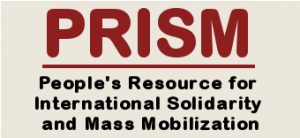

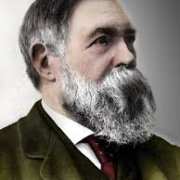

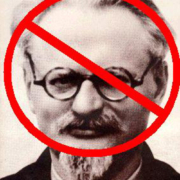
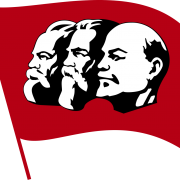
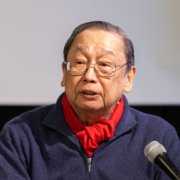


Leave a Reply
Want to join the discussion?Feel free to contribute!